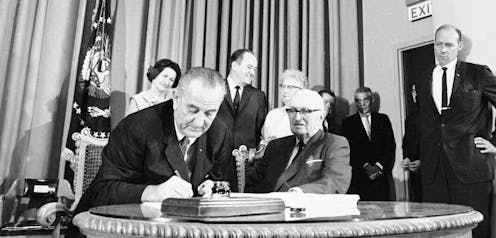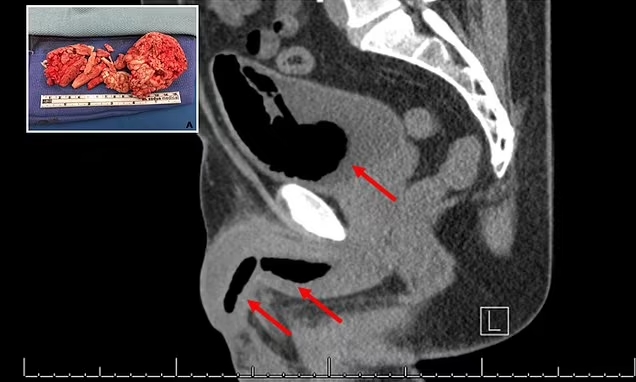England's Covid outbreak has collapsed to its smallest size in almost a year, Government statisticians declared today.
The Office for National Statistics (ONS) estimates that 770,800 people in England were carrying the virus on any given day in the week to August 28 — equivalent to one in 70 people.
The figure, which marks a 14 per cent downturn on the previous week, is the lowest logged since mid-September 2021, when infections fell to 660,000 ahead of the autumn wave.
Cases also trended downward in Wales (31,500), while rates appeared to be on the rise in Scotland (104,000) and Northern Ireland (38,000), although the statisticians said the pattern was uncertain.
The ONS has released an interactive map that allows you to look up how prevalent the virus was in your local area during the most recent week. Hotspots include Edinburgh, Redbridge in London and South Gloucestershire.
While cases have been plunging nation-wide since mid-July, health chiefs are expecting a surge in the colder months as people spend more time mixing in doors and pupils return to classrooms, fuelling the virus's spread.
However the Government is unlikely to be spooked into bringing back any restrictions after choosing to brave the 'living with Covid' approach, that saw isolation, free testing and work from home guidance scrapped.
To protect against the expected spike, officials have embarked on another autumn booster campaign with 26million set to be offered top-up jabs in the coming months. Today, the rollout opened to the over-65s, carers and pregnant women.
NHS bosses renewed calls for those eligible to come forward, warning there is 'no room for complacency' in keeping the virus at bay.
The Office for National Statistics (ONS) estimates that 770,800 people in England were carrying the virus on any given day in the week to August 28 — equivalent to one in 70 people. The figure, which marks a 14 per cent downturn on the previous week, is the lowest logged since mid-September 2021, when infections fell to 660,000 ahead of an autumn wave
The ONS figures, based on swabs of thousands of people, suggest that cases fell by a third in Wales, where one in 95 were thought to be infected. Meanwhile, cases ticked upwards by 8.8 per cent in Scotland (one in 50) and 6.1 per cent in Northern Ireland (one in 50), its figures suggest
The over-50s, residents and staff at care homes for older adults and frontline health and social care workers will be offered a Covid booster
Over-65s over urged to book Covid boosters
People aged 65 and over can now book their Covid booster jab online or via 119.
The NHS is also offering appointments to carers and pregnant women as the vaccine rollout continues into the cooler months.
The over-75s, the severely immunosuppressed and frontline health and care workers have been able to book a booster since last week.
Bookings can be done online or over the phone as long as the person had their last Covid jab at least three months ago.
Around 26million people in England will be eligible for an autumn booster in the comings weeks.
NHS director of vaccinations and screening Steve Russell said: 'There is no room for complacency in keeping Covid on the back foot and this autumn booster will help protect those most at risk.
'From today those aged 65 and over, pregnant women and carers are now able to get their jab.
'If you are one of those eligible, it is as important as ever to get your next dose, so please do come forward as soon as possible.'
Dozens of hospital hubs are joining the rollout to administer the jab – plus flu vaccines where possible – to members of the public as well as NHS staff.
Eventually, all those aged 50 will be offered a vaccine.
Two vaccines have been approved that can be used as boosters this autumn and winter – one from Moderna and the second from Pfizer.
Both have been approved by the Medicines and Healthcare products Regulatory Agency (MHRA) to target both the original and Omicron strains of the virus.
The ONS data — which is closely watched by ministers — is considered the gold standard for monitoring the outbreak, as unlike reported cases, it doesn't rely on Britons testing themselves and reporting the result.
The latest figures, based on swabs from a representative sample of thousands of people, suggest that cases fell by a third in Wales, where one in 95 were thought to be infected.
Meanwhile, cases ticked upwards by 8.8 per cent in Scotland (one in 50) and 6.1 per cent in Northern Ireland (one in 50).
In England, the proportion of people infected dropped in all regions apart from the East Midlands, East of England and the South East.
Infection were lowest in Yorkshire and the Humber and the West Midlands, where just 1.2 per cent of people were infected. The case rate was also below the national average in the North West (1.3 per cent), South West (1.4 per cent) and North East (1.4 per cent).
The East Midlands and South East (1.6 per cent) recorded the highest virus prevalence.
Cases also fell across all age groups, apart from the 16 to 24-year-old (1.6 per cent) and over-70 (1.8 per cent) cohorts, among whom the case rates were highest.
Infections were lowest among two to 11-year-olds (0.9 per cent) and 25 to 34-year-olds (1 per cent).
However, cases are expected to surge in the coming weeks due to people opting to meet indoors and pupils returning to classrooms.
Writing in the British Medical Journal, a group of scientists on pressure group Independent SAGE this month called for schools to implement measures to 'minimise transmission among children and to their families'.
Outbreaks in schools saw exams cancelled and record absences during the darkest days of the pandemic.
In preparation of the spike, the NHS has launched the autumn booster campaign to protect vulnerable groups, with nearly half of the population eligible for a top-up dose.
The rollout will see Britons offered the bi-valent Moderna and Pfizer vaccines, which are tweaked versions of the original doses that specifically protect against the dominance Omicron strain.
However, some people will still be offered the previous generation vaccines if there is not enough stock of the newer versions.
The health service today expanded the vaccine campaign to an additional five million vulnerable Britons, after it initially opened to just the over-75s, immunosuppressed and frontline health and care workers last Wednesday.
Bookings can be done online or by phoning 119 as long as an individual had their last Covid jab at least three months ago.
Britons will also be able to get their flu jab from this month, with eligible people able to get both vaccines at the same appointment, depending on arrangements in their local area.
Steve Russell, the NHS director of vaccinations and screening, said: 'There is no room for complacency in keeping Covid on the backfoot, and this autumn booster will help protect those most at risk.
'From today those aged 65 and over, pregnant women and carers are now able to get their jab. If you are one of those eligible, it is as important as ever to get your next dose, so please do come forward as soon as possible.'
The scheme will be expanded to all over-50s, those with a weakened immune system and housebound people in the coming weeks.
In England, the proportion of people infected dropped in all regions apart from the East Midlands, East of England and the South East Infection were lowest in Yorkshire and the Humber and the West Midlands, where just 1.2 per cent of people were infected. The case rate was also below the national average in the North West (1.3 per cent), South West (1.4 per cent) and North East (1.4 per cent). The East Midlands and South East (1.6 per cent) recorded the highest virus prevalence
Cases also fell across all age groups, apart from the 16 to 24-year-old (1.6 per cent) and over-70 (1.8 per cent) cohorts, among whom the case rates were highest. Infections were lowest among two to 11-year-olds (0.9 per cent) and 25 to 34-year-olds (1 per cent)
But any surge in Omicron cases is not expected to overwhelm hospitals because the strain is less severe and Britons are benefitting from built up immunity due to vaccine rollouts. Data from the Sanger Institute, one of the UK's largest Covid surveillance centres, shows that Omicron strains BA.4 and BA.5 (dark pink and light pink) are the currently circulating variants
In the darkest days of the pandemic, more than 4,000 people in England were admitted to hospital. Despite Omicron causing record peaks in January, April and July, no more than 2,300 infected people were hospitalised in any of those three waves. Latest NHS data shows an average of 518 infected people were admitted to hospitals in England in the week to September 5 — eight times lower than the peak
Meanwhile, 4,900 were in hospital with the virus in the week to September 7 — the lowest level in three months and seven times lower than the peak of 34,000 in January 2021. Health service data also shows only a third of these figures were hospitalised because of the virus. The others were admitted due to other ailments but incidentally tested positive
Fewer than 120 Covid patients required mechanical ventilation on September 7 — the smallest number in more than a year. In the darkest days of the pandemic, 3,700 people were on ventilators
ONS data shows the number of deaths involving Covid in the UK continued to decrease from 622 to 505 in the week ending August 26. Deaths involving the virus accounted for 4.1 per cent of all deaths in the latest week, down from 5 per cent one week earlier
The approach is in line with advice from the Joint Committee on Vaccination and Immunisation (JCVI), the Government's jab advisors, which said the rollout is needed to boost immunity against hospitalisation and death among those most at risk from the virus this winter.
Sky-high immunity rates from Britain's historic vaccination campaign and repeated waves have drastically blunted the threat of the virus over time, meaning it is now more comparable to flu.
With experts adamant the darkest days of the pandemic have been consigned to history, ministers are confident in their hands-off 'living with Covid' strategy.
The plan, unveiled by former Prime Minister Boris Johnson in February, saw vaccines deemed the 'first line of defence' against the virus, with an autumn booster programme expected each year.
The move saw all Covid curbs lifted by spring, with ministers committing not to bring in fresh restrictions unless a new variant places 'unsustainable pressure' on the health service. The Government said it would use the 'world-leading' ONS survey to track the virus in 'granular detail' and spot any surges.
But any surge in Omicron cases is not expected to overwhelm hospitals because the strain is less severe and Britons are benefitting from built up immunity due to vaccine rollouts.
In the darkest days of the pandemic, more than 4,000 people in England were admitted to hospital. Despite Omicron causing record peaks in January, April and July, no more than 2,300 infected people were hospitalised in any of those three waves.
Latest NHS data shows an average of 518 infected people were admitted to hospitals in England in the week to September 5 — eight times lower than the peak.
Meanwhile, 4,900 were in hospital with the virus in the week to September 7 — the lowest level in three months and seven times lower than the peak of 34,000 in January 2021.
Health service data also shows only a third of these figures were hospitalised because of the virus. The others were admitted due to other ailments but incidentally tested positive.
And fewer than 120 required mechanical ventilation on September 7 — the smallest number in more than a year. In the darkest days of the pandemic, 3,700 people were on ventilators.
Source: dailymail.co.uk

















 English (United States) ·
English (United States) ·